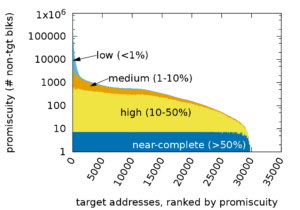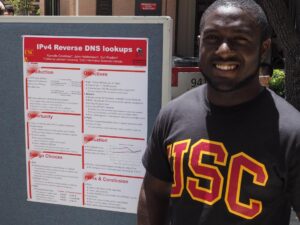We have released version 1.3 of dnsanon_rssac on 2016-06-13, a tool that processes DNS data seen in packet captures (typcally pcap format) to generate RSSAC-002 statistics reports.
Our tool is at https://ant.isi.edu/software/dnsanon_rssac/index.html, with a description at
https://ant.isi.edu/software/dnsanon_rssac/README.html . Our tool builds on dnsanon.
The main goal of our implementation is that partial processing can be done independently and then merged. Merging works both for files captured at different times of the day, or at different anycast sites.
Our software stack has run at B-Root since February 2016, and since May 2016 in production use.
To our knowledge, this tool is the first to implement the RSSAC-002v3 specification.

![[Schmidt16a] figure 4: distribution of measured latency (solid lines) to optimal possible latency (dashed lines) for 4 Root DNS anycast deployments.](https://ant.isi.edu/blog/wp-content/uploads/2016/05/plot-cdf-optimal-300x210.png)


![How newtork activity generates DNS backscatter that is visible at authority servers. (Figure 1 from [Fukuda15a]).](http://ant.isi.edu/blog/wp-content/uploads/2015/09/Fukuda15a_icon-300x190.png)

